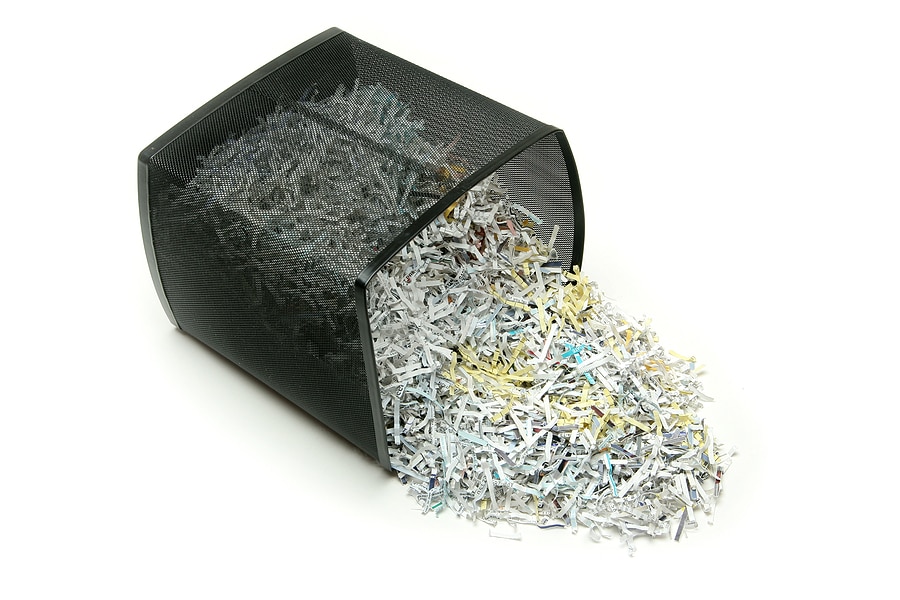What Happens to Your Documents After Shredding?

In your office, you do everything you can to keep sensitive papers secure, from locking your filing cabinets to securing shredding bins. But what happens once those shredding bins are collected and the documents are sent off to be destroyed? And what happens to that shredded paper?
When you’re looking for a vendor to shred your documents, it’s worth taking the time to investigate these questions. Not all document and data destruction companies operate in the same way, and you’ll want to choose a vendor that will keep your information secure while also keeping shredded paper out of the landfills.
The Shredding Process
Document security starts in your office with locked document bins. Once those bins are ready to be emptied, a data destruction company can pick up those bins and shred the documents inside. Most companies will take the materials offsite, but some now employ mobile document shredding trucks, increasing the speed and efficiency of the process.
The document shreds are very small…so small that it’s virtually impossible read anything on them, let alone to try to reassemble them. Even so, these shreds remain in a secure location until they can be processed for recycling.
The Recycling Process
It’s rare that a document shredding vendor will have the capacity to process paper shreds for recycling directly. Instead, these shreds are usually compressed into large bales, which are then shipped to a paper recycling plant.
At these recycling plants, the paper is sorted by quality and then soaked in a bath of chemicals and water. Once the shreds break down into paper pulp, they are further treated to remove any inks and to bleach the mixture. The pulp is then run through a fine mesh in order to screen out any debris, after which it is pressed into sheets and dried.
Reclaimed office paper can be turned into several products. Often, the shreds of your documents may become new sheets of paper for office use, but they may also be transformed into any number of paper products, ranging from toilet paper to napkins to paper towels.
It’s worth noting that paper that has been shredded at home is not generally accepted at municipal recycling plants, since the loose shreds interfere with the recycling process. However, some localities do offer drop-off locations and special collection days for their communities, so keep an eye out for those.
Choosing a Shredding and Recycling Vendor
While this is how an ideal shredding and recycling process should work, things don’t always happen that way in real life. Some firms take shortcuts in their document security, while others may not be fully committed to a sustainable recycling process.
When it comes to document shredding, you determine what your company needs. If your company decides to shred its own documents, for instance, you may just need a company to come in and collect the shreds. You may prefer the full-service option if you don’t want to deal with shredding machines directly.
If you’re searching for data and document destruction and recycling in South Dakota, contact SEAM today.
SEAM provides IT recycling and data destruction services including onsite shredding and hard drive wiping to South Dakota, North Dakota, Minnesota, Iowa, and Nebraska.
Schedule a pickup or contact us for more information.





